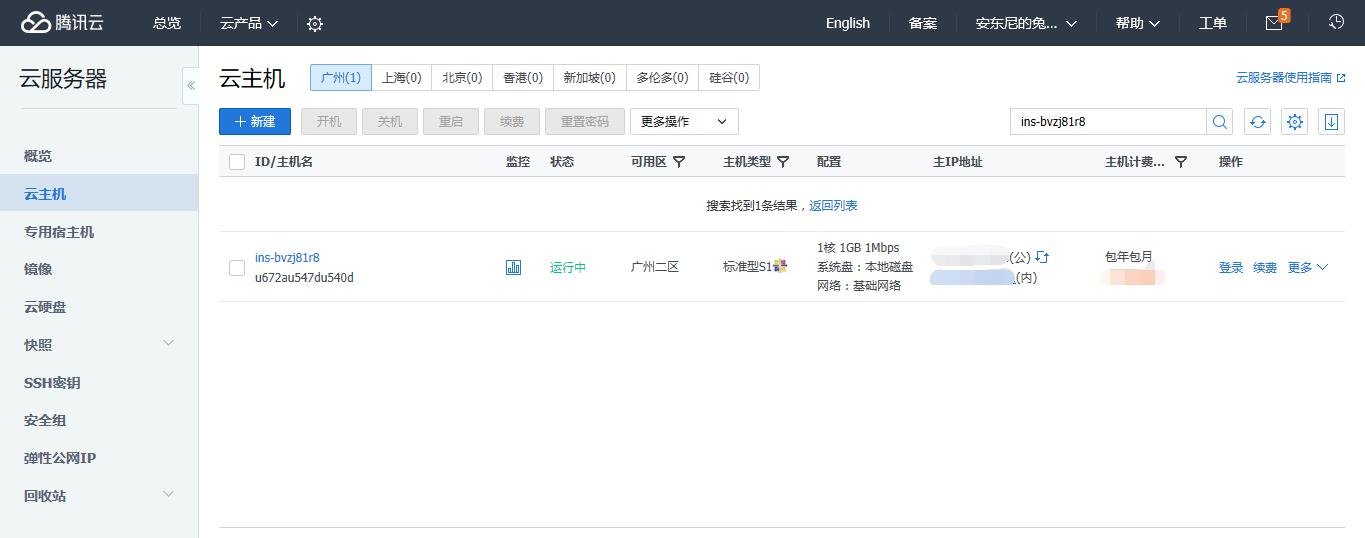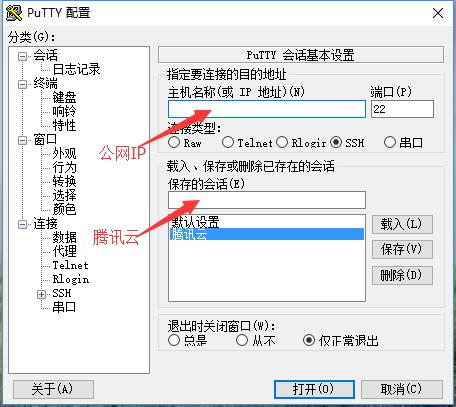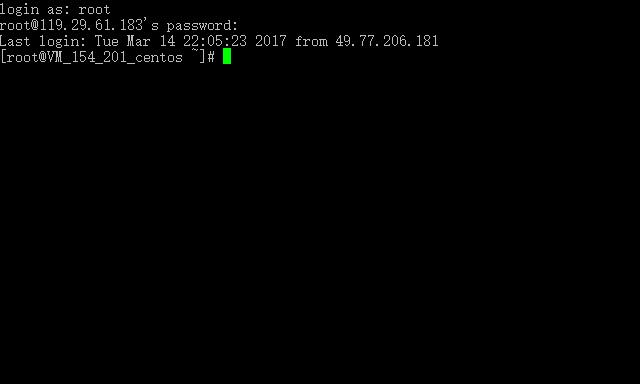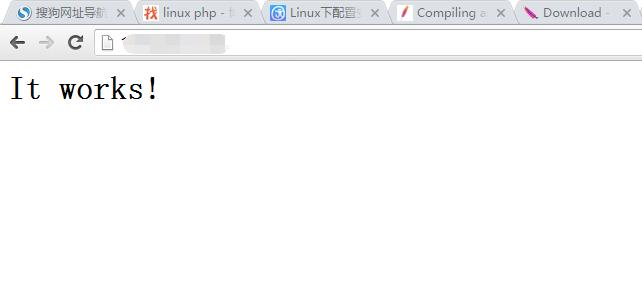从“识脸”到“识人”,云从科技跨镜追踪击败腾讯微软
Posted
tags:
篇首语:本文由小常识网(cha138.com)小编为大家整理,主要介绍了从“识脸”到“识人”,云从科技跨镜追踪击败腾讯微软相关的知识,希望对你有一定的参考价值。
参考技术A3月1日,人工智能企业云从 科技 宣布在跨镜追踪技术(ReID,Person Re-identification)上再次取得重大进展,在三大主流ReID数据集Market-1501、DukeMTMC-reID、CUHK03上超过阿里巴巴、腾讯、微软、中科院自动化所等企业与科研机构,创造新的世界纪录。
这是继去年云从 科技 刷新跨镜追踪技术世界纪录后,再一次在该领域领跑全球。本次云从 科技 研究团队在三大数据集的两大核心指标mAP与Rank-1准确率上均取得第一,其中在Market-1501数据集上的mAP远超目前业内顶尖水平, 达到了91.14%。
云从 科技 于2015年在广州南沙新区注册成立,在刚刚公布的《粤港澳大湾区发展规划纲要》中,多次提及“人工智能”,其中,在“打造广州南沙粤港澳全面合作示范区”中表示,共同将广州南沙打造为华南 科技 创新成果转化高地,积极布局新一代信息技术、人工智能、生命 健康 等 科技 前沿领域,培育发展平台经济、共享经济、体验经济等新业态。
跨镜追踪:从“认脸”到“识人”
电影《速度与激情7》里的“天眼”系统,可以整合、调取全球所有的视频监控、手机音频等数据,再使用大数据和人脸识别等技术的迅速分析和处理,在极短的时间内(以秒计算)找到目标人和目标车辆进行追踪,让目标人或物无所遁形。
然而,这也有一个漏洞:因为有的角落或低头的角度使得摄像机无法获取完整的人脸,如果犯罪分子熟悉摄像头位置,就很有可能会避开镜头,低头开溜。这时候就需要靠下面这项技术了。
跨镜追踪(ReID)技术能够识别人的服装穿着、体态与发型等,主要解决跨摄像头跨场景的情况下行人的识别、追踪与检索。因为有着丰富的应用场景,是计算机视觉研究的热门领域。
自主算法再创三项世界纪录
在跨镜追踪(ReID)技术研究领域,首位命中率(Rank-1 Accuracy)和平均精度均值(Mean Average Precision,mAP)是衡量算法水平的核心指标,其中平均精度均值(mAP)更能综合反映算法在真实场景中应用的能力。
云从 科技 原创的“飞龙R2”算法方案在Market-1501,DukeMTMC-reID,CUHK03三大数据集中,mAP关键指标分别达到了91.14%、83.31%、81.06%,相较于目前业内顶尖水平有着近3%-4%的提升,Rank-1关键指标分别也达到了业界最好水平(该结果是在不引入额外数据,不利用测试集时空信息,不进行重排再优化等条件下取得)。
寻找更多应用落地,提供个性化服务和精准营销
随着人脸识别技术应用落地的成熟,行业开始寻求更多技术应用的可能性。跨镜追踪技术作为人脸技术的重要补充和扩展,越来越多互联网巨头和 科技 独角兽开始意识到它的重要性,并逐渐在跨镜追踪研究领域投入资源。
云从 科技 作为这一领域较早的 探索 者和布局者,在跨镜追踪和其相关技术上,如行人检测、行人检索、行人轨迹跟踪、行人属性结构化、行人动作检测和识别等,都拥有大量技术经验积累。在经历了技术不断成熟的阶段后,为了让技术产生应用价值,云从开始致力于产品化 探索 和商业应用落地。经过一年的努力,云从已经拥有了面向不同行业场景的技术方案和商业产品。
例如跨镜追踪系统可以帮助公安视频侦查实现人脸、人体图像与数据联结,强化轨迹追踪功能,深化公安视频图像应用能力。
在新零售场景中,跨镜追踪技术可以让“人”与“场”之间的关系数据有办法被收集并以可视化的方式重现。在云从 科技 为智能门店提供的解决方案中,商家对用户画像和用户行为有更强的感知,从而能够做出更准确的商业决策。同时,也为线下针对用户的个性化服务和精准营销提供了可能。
打造AI技术闭环,人工智能五步走
智能感知、大数据技术与五步发展理论,是云从 科技 打造核心技术闭环,领跑人工智能行业发展的基础与路径。
2018年10月的国家“人工智能基础资源与公共服务平台”发布会上,云从 科技 创始人周曦提出了从学术研究到智能生态的人工智能发展五个阶段,核心技术闭环是五个阶段的重要基础。
目前,云从 科技 承担了国家发改委与工信部的人工智能基础平台、人工智能应用平台和人工智能的核心芯片平台项目,并建立包含人脸识别、跨镜追踪、车辆识别、姿态识别、语音识别、文字识别等智能感知技术和大数据分析等认知决策技术为核心的技术闭环,并刷新多项世界纪录,保持自主核心技术国际领先。
在这个基础上,云从 科技 正在致力整合算力、智力、数据等资源及其成果,打造人工智能开放平台与生态,进一步促进人工智能在金融、安防、交通、零售、商业等重要行业的落地与深度融合。
【作者】 郜小平
【来源】 南方报业传媒集团南方+客户端
腾讯云从零搭建PHP运行环境
一、首先我们得注册腾讯云,租用一台服务器,我选择的是CentOS 7.2 64位,这时候会给你这台主机的公网IP和内网IP,以及这台主机的用户名及密码。

二、我们可以使用腾讯云网页上自带的登录按钮进行登录,也可以使用putty进行登录,下面我们使用putty进行远程操作。
1、百度putty,可以下载最新的putty,下载下来是一个压缩包:

psftp.exe用于文件传输,我们使用putty.exe进行远程登录:

2、我们使用ssh方式连接比较安全,默认端口是22。点击载入,这时候会提示我们输入用户名和密码,正确输入后,登录成功!

三、我们要在服务器中安装aphache、php等软件,就避免不了忘服务器中上传文件,我推荐大家使用winscp这款软件,方便直观。
1、百度winscp,可以下载最新的版本,安装成功后,输入服务器的公网IP,用户名,密码之后就可以成功登陆了,如图:

四、工具都准备好之后,我们就可以开始搭建我们的环境了,具体可以参考 http://www.cnblogs.com/lufangtao/archive/2012/12/30/2839679.html 这篇文章,写的很透彻。
1、首先安装apache,到官网下载linux安装包:http://httpd.apache.org/download.cgi
安装apache前,需要安装APR和APR-util、prce
APR和APR-util下载地址:http://apr.apache.org/download.cgi?Preferred=http%3A%2F%2Fmirrors.hust.edu.cn%2Fapache%2F
prce下载地址:http://jaist.dl.sourceforge.NET/project/pcre/pcre/8.35/pcre-8.35.tar.gz

我们将这四个压缩文件全部下载下来:

2、用winscp将这四个文件全部上传到服务器之后,解压:
tar -zxvf httpd-2.4.25.tar.gz
tar -zxvf apr-1.5.2.tar.gz
tar -zxvf apr-util-1.5.4.tar.gz
tar -zxvf pcre-8.35.tar.gz
3、安装Gcc:yum install gcc
安装C++编译器:yum install gcc-c++
4、安装APR:
进入解压后APR文件夹:cd apr-1.5.2
安装前校验:./configure --prefix=/usr/local/apr
编译:make
安装:make install
5、安装apr-util:
进入解压后的apr-util文件夹:cd apr-util-1.5.4
安装前校验:./confiure --prefix=/usr/local/apr-util --with-apr=/usr/local/apr
编译:make
安装:make install
6、安装pcre:
进入解压后的pcre文件夹:cd pcre-8.35
安装前校验:./configure --prefix=/usr/local/pcre
编译:make
安装:make instal
7、安装apache:
进入解压后的apache文件夹:cd httpd-2.4.25
安装前校验:./configure --prefix=/usr/local/apache2 --enable-module=shared --with-apr=/usr/local/apr/ --with-apr-util=/usr/local/apr-util/ --with-pcre=/usr/local/pcre
编译:make
安装:make install
8、启动,重启和停止 ,先切换到安装完成后的目录/usr/local/apache2/bin
./apachectl -k start
./apachectl -k restart
./apachectl -k stop
9、配置文件:(满足最基本的配置)
# # This is the main Apache HTTP server configuration file. It contains the # configuration directives that give the server its instructions. # See <URL:http://httpd.apache.org/docs/2.4/> for detailed information. # In particular, see # <URL:http://httpd.apache.org/docs/2.4/mod/directives.html> # for a discussion of each configuration directive. # # Do NOT simply read the instructions in here without understanding # what they do. They\'re here only as hints or reminders. If you are unsure # consult the online docs. You have been warned. # # Configuration and logfile names: If the filenames you specify for many # of the server\'s control files begin with "/" (or "drive:/" for Win32), the # server will use that explicit path. If the filenames do *not* begin # with "/", the value of ServerRoot is prepended -- so "logs/access_log" # with ServerRoot set to "/usr/local/apache2" will be interpreted by the # server as "/usr/local/apache2/logs/access_log", whereas "/logs/access_log" # will be interpreted as \'/logs/access_log\'. # # ServerRoot: The top of the directory tree under which the server\'s # configuration, error, and log files are kept. # # Do not add a slash at the end of the directory path. If you point # ServerRoot at a non-local disk, be sure to specify a local disk on the # Mutex directive, if file-based mutexes are used. If you wish to share the # same ServerRoot for multiple httpd daemons, you will need to change at # least PidFile. # ServerRoot "/usr/local/apache2" # # Mutex: Allows you to set the mutex mechanism and mutex file directory # for individual mutexes, or change the global defaults # # Uncomment and change the directory if mutexes are file-based and the default # mutex file directory is not on a local disk or is not appropriate for some # other reason. # # Mutex default:logs # # Listen: Allows you to bind Apache to specific IP addresses and/or # ports, instead of the default. See also the <VirtualHost> # directive. # # Change this to Listen on specific IP addresses as shown below to # prevent Apache from glomming onto all bound IP addresses. # #Listen 12.34.56.78:80 Listen 80 # # Dynamic Shared Object (DSO) Support # # To be able to use the functionality of a module which was built as a DSO you # have to place corresponding `LoadModule\' lines at this location so the # directives contained in it are actually available _before_ they are used. # Statically compiled modules (those listed by `httpd -l\') do not need # to be loaded here. # # Example: # LoadModule foo_module modules/mod_foo.so # LoadModule authn_file_module modules/mod_authn_file.so #LoadModule authn_dbm_module modules/mod_authn_dbm.so #LoadModule authn_anon_module modules/mod_authn_anon.so #LoadModule authn_dbd_module modules/mod_authn_dbd.so #LoadModule authn_socache_module modules/mod_authn_socache.so LoadModule authn_core_module modules/mod_authn_core.so LoadModule authz_host_module modules/mod_authz_host.so LoadModule authz_groupfile_module modules/mod_authz_groupfile.so LoadModule authz_user_module modules/mod_authz_user.so #LoadModule authz_dbm_module modules/mod_authz_dbm.so #LoadModule authz_owner_module modules/mod_authz_owner.so #LoadModule authz_dbd_module modules/mod_authz_dbd.so LoadModule authz_core_module modules/mod_authz_core.so LoadModule access_compat_module modules/mod_access_compat.so LoadModule auth_basic_module modules/mod_auth_basic.so #LoadModule auth_form_module modules/mod_auth_form.so #LoadModule auth_digest_module modules/mod_auth_digest.so #LoadModule allowmethods_module modules/mod_allowmethods.so #LoadModule file_cache_module modules/mod_file_cache.so #LoadModule cache_module modules/mod_cache.so #LoadModule cache_disk_module modules/mod_cache_disk.so #LoadModule cache_socache_module modules/mod_cache_socache.so #LoadModule socache_shmcb_module modules/mod_socache_shmcb.so #LoadModule socache_dbm_module modules/mod_socache_dbm.so #LoadModule socache_memcache_module modules/mod_socache_memcache.so #LoadModule watchdog_module modules/mod_watchdog.so #LoadModule macro_module modules/mod_macro.so #LoadModule dbd_module modules/mod_dbd.so #LoadModule dumpio_module modules/mod_dumpio.so #LoadModule buffer_module modules/mod_buffer.so #LoadModule ratelimit_module modules/mod_ratelimit.so LoadModule reqtimeout_module modules/mod_reqtimeout.so #LoadModule ext_filter_module modules/mod_ext_filter.so #LoadModule request_module modules/mod_request.so #LoadModule include_module modules/mod_include.so LoadModule filter_module modules/mod_filter.so #LoadModule substitute_module modules/mod_substitute.so #LoadModule sed_module modules/mod_sed.so LoadModule mime_module modules/mod_mime.so LoadModule log_config_module modules/mod_log_config.so #LoadModule log_debug_module modules/mod_log_debug.so #LoadModule logio_module modules/mod_logio.so LoadModule env_module modules/mod_env.so #LoadModule expires_module modules/mod_expires.so LoadModule headers_module modules/mod_headers.so #LoadModule unique_id_module modules/mod_unique_id.so LoadModule setenvif_module modules/mod_setenvif.so LoadModule version_module modules/mod_version.so #LoadModule remoteip_module modules/mod_remoteip.so #LoadModule proxy_module modules/mod_proxy.so #LoadModule proxy_connect_module modules/mod_proxy_connect.so #LoadModule proxy_ftp_module modules/mod_proxy_ftp.so #LoadModule proxy_http_module modules/mod_proxy_http.so #LoadModule proxy_fcgi_module modules/mod_proxy_fcgi.so #LoadModule proxy_scgi_module modules/mod_proxy_scgi.so #LoadModule proxy_fdpass_module modules/mod_proxy_fdpass.so #LoadModule proxy_wstunnel_module modules/mod_proxy_wstunnel.so #LoadModule proxy_ajp_module modules/mod_proxy_ajp.so #LoadModule proxy_balancer_module modules/mod_proxy_balancer.so #LoadModule proxy_express_module modules/mod_proxy_express.so #LoadModule proxy_hcheck_module modules/mod_proxy_hcheck.so #LoadModule session_module modules/mod_session.so #LoadModule session_cookie_module modules/mod_session_cookie.so #LoadModule session_dbd_module modules/mod_session_dbd.so #LoadModule slotmem_shm_module modules/mod_slotmem_shm.so #LoadModule lbmethod_byrequests_module modules/mod_lbmethod_byrequests.so #LoadModule lbmethod_bytraffic_module modules/mod_lbmethod_bytraffic.so #LoadModule lbmethod_bybusyness_module modules/mod_lbmethod_bybusyness.so #LoadModule lbmethod_heartbeat_module modules/mod_lbmethod_heartbeat.so LoadModule unixd_module modules/mod_unixd.so #LoadModule dav_module modules/mod_dav.so LoadModule status_module modules/mod_status.so LoadModule autoindex_module modules/mod_autoindex.so #LoadModule info_module modules/mod_info.so #LoadModule cgid_module modules/mod_cgid.so #LoadModule dav_fs_module modules/mod_dav_fs.so #LoadModule vhost_alias_module modules/mod_vhost_alias.so #LoadModule negotiation_module modules/mod_negotiation.so LoadModule dir_module modules/mod_dir.so #LoadModule actions_module modules/mod_actions.so #LoadModule speling_module modules/mod_speling.so #LoadModule userdir_module modules/mod_userdir.so LoadModule alias_module modules/mod_alias.so #LoadModule rewrite_module modules/mod_rewrite.so <IfModule unixd_module> # # If you wish httpd to run as a different user or group, you must run # httpd as root initially and it will switch. # # User/Group: The name (or #number) of the user/group to run httpd as. # It is usually good practice to create a dedicated user and group for # running httpd, as with most system services. # User daemon Group daemon </IfModule> # \'Main\' server configuration # # The directives in this section set up the values used by the \'main\' # server, which responds to any requests that aren\'t handled by a # <VirtualHost> definition. These values also provide defaults for # any <VirtualHost> containers you may define later in the file. # # All of these directives may appear inside <VirtualHost> containers, # in which case these default settings will be overridden for the # virtual host being defined. # # # ServerAdmin: Your address, where problems with the server should be # e-mailed. This address appears on some server-generated pages, such # as error documents. e.g. admin@your-domain.com # ServerAdmin you@example.com # # ServerName gives the name and port that the server uses to identify itself. # This can often be determined automatically, but we recommend you specify # it explicitly to prevent problems during startup. # # If your host doesn\'t have a registered DNS name, enter its IP address here. # ServerName localhost:80 # # Deny access to the entirety of your server\'s filesystem. You must # explicitly permit access to web content directories in other # <Directory> blocks below. # <Directory /> AllowOverride none Require all denied </Directory> # # Note that from this point forward you must specifically allow # particular features to be enabled - so if something\'s not working as # you might expect, make sure that you have specifically enabled it # below. # # # DocumentRoot: The directory out of which you will serve your # documents. By default, all requests are taken from this directory, but # symbolic links and aliases may be used to point to other locations. # DocumentRoot "/usr/local/apache2/htdocs" <Directory "/usr/local/apache2/htdocs"> # # Possible values for the Options directive are "None", "All", # or any combination of: # Indexes Includes FollowSymLinks SymLinksifOwnerMatch ExecCGI MultiViews # # Note that "MultiViews" must be named *explicitly* --- "Options All" # doesn\'t give it to you. # # The Options directive is both complicated and important. Please see # http://httpd.apache.org/docs/2.4/mod/core.html#options # for more information. # Options Indexes FollowSymLinks # # AllowOverride controls what directives may be placed in .htaccess files. # It can be "All", "None", or any combination of the keywords: # AllowOverride FileInfo AuthConfig Limit # AllowOverride None # # Controls who can get stuff from this server. # Require all granted </Directory> # # DirectoryIndex: sets the file that Apache will serve if a directory # is requested. # <IfModule dir_module> DirectoryIndex index.html DirectoryIndex index.html index.php </IfModule> # # The following lines prevent .htaccess and .htpasswd files from being # viewed by Web clients. # <Files ".ht*"> Require all denied </Files> # # ErrorLog: The location of the error log file. # If you do not specify an ErrorLog directive within a <VirtualHost> # container, error messages relating to that virtual host will be # logged here. If you *do* define an error logfile for a <VirtualHost> # container, that host\'s errors will be logged there and not here. # ErrorLog "logs/error_log" # # LogLevel: Control the number of messages logged to the error_log. # Possible values include: debug, info, notice, warn, error, crit, # alert, emerg. # LogLevel warn <IfModule log_config_module> # # The following directives define some format nicknames for use with # a CustomLog directive (see below). # LogFormat "%h %l %u %t \\"%r\\" %>s %b \\"%{Referer}i\\" \\"%{User-Agent}i\\"" combined LogFormat "%h %l %u %t \\"%r\\" %>s %b" common <IfModule logio_module> # You need to enable mod_logio.c to use %I and %O LogFormat "%h %l %u %t \\"%r\\" %>s %b \\"%{Referer}i\\" \\"%{User-Agent}i\\" %I %O" combinedio </IfModule> # # The location and format of the access logfile (Common Logfile Format). # If you do not define any access logfiles within a <VirtualHost> # container, they will be logged here. Contrariwise, if you *do* # define per-<VirtualHost> access logfiles, transactions will be # logged therein and *not* in this file. # CustomLog "logs/access_log" common # # If you prefer a logfile with access, agent, and referer information # (Combined Logfile Format) you can use the following directive. # #CustomLog "logs/access_log" combined </IfModule> <IfModule alias_module> # # Redirect: Allows you to tell clients about documents that used to # exist in your server\'s namespace, but do not anymore. The client # will make a new request for the document at its new location. # Example: # Redirect permanent /foo http://www.example.com/bar # # Alias: Maps web paths into filesystem paths and is used to # access content that does not live under the DocumentRoot. # Example: # Alias /webpath /full/filesystem/path # # If you include a trailing / on /webpath then the server will # require it to be present in the URL. You will also likely # need to provide a <Directory> section to allow access to # the filesystem path. # # ScriptAlias: This controls which directories contain server scripts. # ScriptAliases are essentially the same as Aliases, except that # documents in the target directory are treated as applications and # run by the server when requested rather than as documents sent to the # client. The same rules about trailing "/" apply to ScriptAlias # directives as to Alias. # ScriptAlias /cgi-bin/ "/usr/local/apache2/cgi-bin/" </IfModule> <IfModule cgid_module> # # ScriptSock: On threaded servers, designate the path to the UNIX # socket used to communicate with the CGI daemon of mod_cgid. # #Scriptsock cgisock </IfModule> # # "/usr/local/apache2/cgi-bin" should be changed to whatever your ScriptAliased # CGI directory exists, if you have that configured. # <Directory "/usr/local/apache2/cgi-bin"> AllowOverride None Options None Require all granted </Directory> <IfModule headers_module> # # Avoid passing HTTP_PROXY environment to CGI\'s on this or any proxied # backend servers which have lingering "httpoxy" defects. # \'Proxy\' request header is undefined by the IETF, not listed by IANA # RequestHeader unset Proxy early </IfModule> <IfModule mime_module> # # TypesConfig points to the file containing the list of mappings from # filename extension to MIME-type. # TypesConfig conf/mime.types # # AddType allows you to add to or override the MIME configuration # file specified in TypesConfig for specific file types. # #AddType application/x-gzip .tgz # # AddEncoding allows you to have certain browsers uncompress # information on the fly. Note: Not all browsers support this. # #AddEncoding x-compress .Z #AddEncoding x-gzip .gz .tgz # # If the AddEncoding directives above are commented-out, then you # probably should define those extensions to indicate media types: # AddType application/x-compress .Z AddType application/x-gzip .gz .tgz AddType application/x-httpd-php .php AddType application/x-httpd-php-source .php5 # # AddHandler allows you to map certain file extensions to "handlers": # actions unrelated to filetype. These can be either built into the server # or added with the Action directive (see below) # # To use CGI scripts outside of ScriptAliased directories: # (You will also need to add "ExecCGI" to the "Options" directive.) # #AddHandler cgi-script .cgi # For type maps (negotiated resources): #AddHandler type-map var # # Filters allow you to process content before it is sent to the client. # # To parse .shtml files for server-side includes (SSI): # (You will also need to add "Includes" to the "Options" directive.) # #AddType text/html .shtml #AddOutputFilter INCLUDES .shtml </IfModule> # # The mod_mime_magic module allows the server to use various hints from the # contents of the file itself to determine its type. The MIMEMagicFile # directive tells the module where the hint definitions are located. # #MIMEMagicFile conf/magic # # Customizable error responses come in three flavors: # 1) plain text 2) local redirects 3) external redirects # # Some examples: #ErrorDocument 500 "The server made a boo boo." #ErrorDocument 404 /missing.html #ErrorDocument 404 "/cgi-bin/missing_handler.pl" #ErrorDocument 402 http://www.example.com/subscription_info.html # # # MaxRanges: Maximum number of Ranges in a request before # returning the entire resource, or one of the special # values \'default\', \'none\' or \'unlimited\'. # Default setting is to accept 200 Ranges. #MaxRanges unlimited # # EnableMMAP and EnableSendfile: On systems that support it, # memory-mapping or the sendfile syscall may be used to deliver # files. This usually improves server performance, but must # be turned off when serving from networked-mounted # filesystems or if support for these functions is otherwise # broken on your system. # Defaults: EnableMMAP On, EnableSendfile Off # #EnableMMAP off #EnableSendfile on # Supplemental configuration # # The configuration files in the conf/extra/ directory can be # included to add extra features or to modify the default configuration of # the server, or you may simply copy their contents here and change as # necessary. # Server-pool management (MPM specific) #Include conf/extra/httpd-mpm.conf # Multi-language error messages #Include conf/extra/httpd-multilang-errordoc.conf # Fancy directory listings #Include conf/extra/httpd-autoindex.conf # Language settings #Include conf/extra/httpd-languages.conf # User home directories #Include conf/extra/httpd-userdir.conf # Real-time info on requests and configuration #Include conf/extra/httpd-info.conf # Virtual hosts #Include conf/extra/httpd-vhosts.conf # Local access to the Apache HTTP Server Manual #Include conf/extra/httpd-manual.conf # Distributed authoring and versioning (WebDAV) #Include conf/extra/httpd-dav.conf # Various default settings #Include conf/extra/httpd-default.conf # Configure mod_proxy_html to understand HTML4/XHTML1 <IfModule proxy_html_module> Include conf/extra/proxy-html.conf </IfModule> # Secure (SSL/TLS) connections #Include conf/extra/httpd-ssl.conf # # Note: The following must must be present to support # starting without SSL on platforms with no /dev/random equivalent # but a statically compiled-in mod_ssl. # <IfModule ssl_module> SSLRandomSeed startup builtin SSLRandomSeed connect builtin </IfModule>
10 、测试:
在浏览器里输入http://公网Ip,显示如下,配置成功。

五、安装php
1、官网上下载php压缩包,并上传到服务器解压:http://www.php.net/downloads.php
2、建立目标文件夹mkdir /usr/local/php,等下php安装到该目录下。
3、安装前校验: ./configure --prefix=/usr/local/php --with-apxs2=/usr/local/apache/bin/apxs
可能会提示出现错误:configure: error: xml2-config not found. Please check your libxml2 installation。运行yum install libxml2,然后再运行yum install libxml2-devel安装完毕后,重新运行上面的./configure命令。
4、编译:make
5、编译测试:make test
6、编译安装:make install
7、在apache的htdocs下建立一个php文件test.php,里面的内容如下:
<?php
phpinfo();
?>
重启apache服务器,在浏览器中输入:http://公网IP/test.php,结果如下:

php配置成功!
以上是关于从“识脸”到“识人”,云从科技跨镜追踪击败腾讯微软的主要内容,如果未能解决你的问题,请参考以下文章
云从科技图像识别技术入选AAAI 2020,引领技术前沿发展
云从上市开盘大涨超50%,联通回应解约24岁应届生,马斯克比尔盖茨因推特矛盾升级,今日更多大新闻在此...